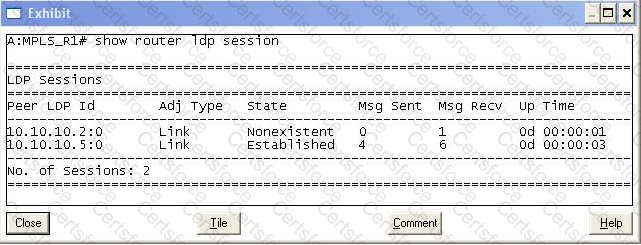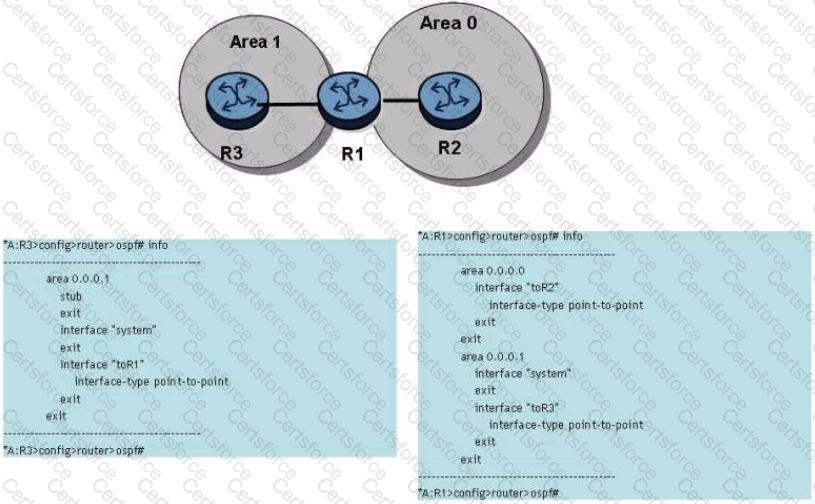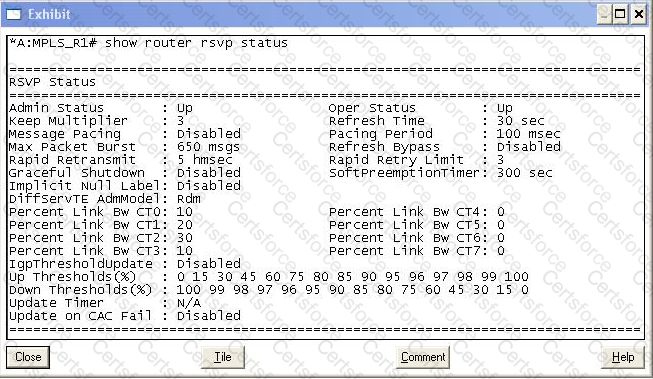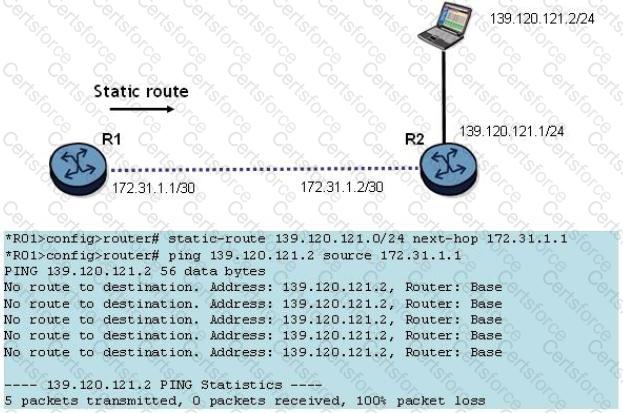How many bits of the MPLS header are used for the label field?
A static route needs to be configured with a next-hop that is NOT directly connected to the router. Which of the following must be TRUE?
Which of the following is a primary cause of IP hyper-aggregation?
LDP is enabled on both ends of a point-to-point link, but the "show router Idp status" command indicates that LDP is operationally down. The Oper Down Reason field shows the message "systemIpDown." What might cause this condition?
Click on the exhibit.

Router R2 uses OSPF to advertise the network 192.168.3.0/24 to router R1. A route policy has been configured to reject the route on router R1.
Why doesn't the route policy work?
Which of the following routing protocols are supported on the Alcatel-Lucent 7750 SR to enable constraint-based LSPs? (Choose two)
Click on the exhibit button below.

Under which condition might the peer LDP ID 10.10.10.2:0 entry show state "Nonexistent"?
Click on the exhibit.

The OSPF adjacency between routers R1 and R3 does not come up.
Which of the following is a possible solution to the problem?
Click on the exhibit button below.

Given the configuration shown, how much of a link's 100Mbps reservable bandwidth can an LSP access when configured for class-type 0 and priority 1?
When multiple routing protocols offer a route for the same prefix, what part of the router is in charge of deciding which route to make active?
During node protection signaling, the PLR knows the address of the MP from which of the following methods?
Click on the exhibit.

Given the output, which of the following is the most accurate statement about the network?
Click on the exhibit.

The operator of an IS-IS network wishes to have link metrics dynamically calculated in the same manner as OSPF. The router with system address 10.10.10.1 is one hop away on a 1Gbps link
Which of the following is correct?
Which of the following about the OSPF BDR is TRUE?
Click on the exhibit.

A static route has been configured on router R1 to reach the PC at 139.120.121.2. What might be causing the ping to fail?
Router R4 originates 500 RSVP signaled LSPs with default hello and refresh timer settings If the only downstream communication fails (link is operationally UP), how long will RSVP wait before it declares the RSVP sessions down?
Click on the exhibit.

Which of the following would you expect to see in router R4's OSPF database?


Which of the following LDP messages are used in the successful establishment of LDP sessions? Choose three answers
Which of the following statements regarding admin groups is FALSE?
Click on the exhibit.

All ports in the network are operationally up and have a speed of 1Gbps.
Which of the following is TRUE?